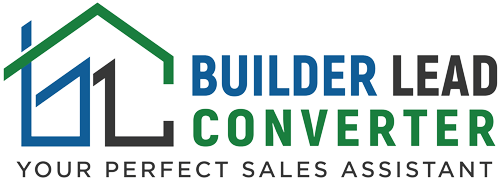So said the radio talk show host, as he commented on the current government administrations views on pending Cap and “Tax” legislation.
No matter what your political views are on man made global warming/climate change or whatever you want to call it- are you making a big mistake in the world of marketing “green” housing?
Here’s two stories on consumer’s reactions to Green housing and the lessons learned. I hope you don’t make these same mistakes!
~Rick
I had to say “Goodbye” to a wonderful salesperson I’ve had the good fortune to manage off and on over the last 10 years.
As he was wrapping up his sales duties we discussed a job that was sold- but he was still trying to get into production.
This client struggled to make decisions. She also was very interested in building a “green” project (not a good combination).
The salesperson updated me that most of the decisions had been made and the job was about ready for production. I asked him if the homeowner was still submitting the project for the Green designation program and the answer was “no.”
When I inquired if it was because of the additional decisions required for the designation I was surprised to learn that it was not.
For her- it came down to adding things to the home she didn’t see value in…the extra price didn’t justify the return.
Model Homes
Another client just sold a model home that was built with a Green designation and entered into a home tour.
The tour generated hundreds of traffic units and the model was well publicized that it was a Green home with the designation.
The result?
Approximately 15 traffic units out of 500 previewed the home because of the Green designation.
I asked my client about the person that purchased the home. “Did they buy it because of the green designation?” The answer- a flat “no.”
I asked what the cost to add the features and obtain the designation (I know some of you reading this are thinking there is no “cost”- only an investment. I would tell you that if the buyer didn’t value the “investment” the R.O.I is zero.) About $10,000 was spent to get the designation.
The Fallacy of Green Marketing & Where You May Have Gone Wrong
Oh sure the intentions are good. The execution just stinks!
Anytime you try to use a designation (LEED, NAHB Green Building, etc.) that was defined by someone else and ask a consumer to embrace it as their own is a losing battle.
Why?
Look at it this way. The average Joe and Josephine has no definition for…
- Blower door test
- R-value
- Building envelope
- Forest Certified
- U-Value
- LEED
And the list goes on and on.
The average consumer DOES understand…
- More money in my pocket from lower utility bills
- My kids are safe and healthy
- I live in a clean community
Ford “gets” this. Check out how they are promoting their new 2010 Ford Fusion Hybrid>>. Compare that to how Toyota promotes the Prius…
The Answer
The answer is simple. Make Green personal. Make it tangible for your buyer. You don’t need a designation to do that. You just need to understand what is important to your buyer.
Use this link to find out how to “segment” your Green offering based on your buyer’s interests>>
Until our government and building associations understand this fact, the current designations will continue to do what they have always done…Generate interest but very little sales.
Am I nuts? Have a different opinion? Think I’m the idiot?
Tell me what you think. Post your comment below.
Happy Selling!
P.S. I do have clients selling homes using Green strategies. They just aren’t calling them GREEN.
Check out a video of how they are doing it by clicking on this link>>





Recent Comments